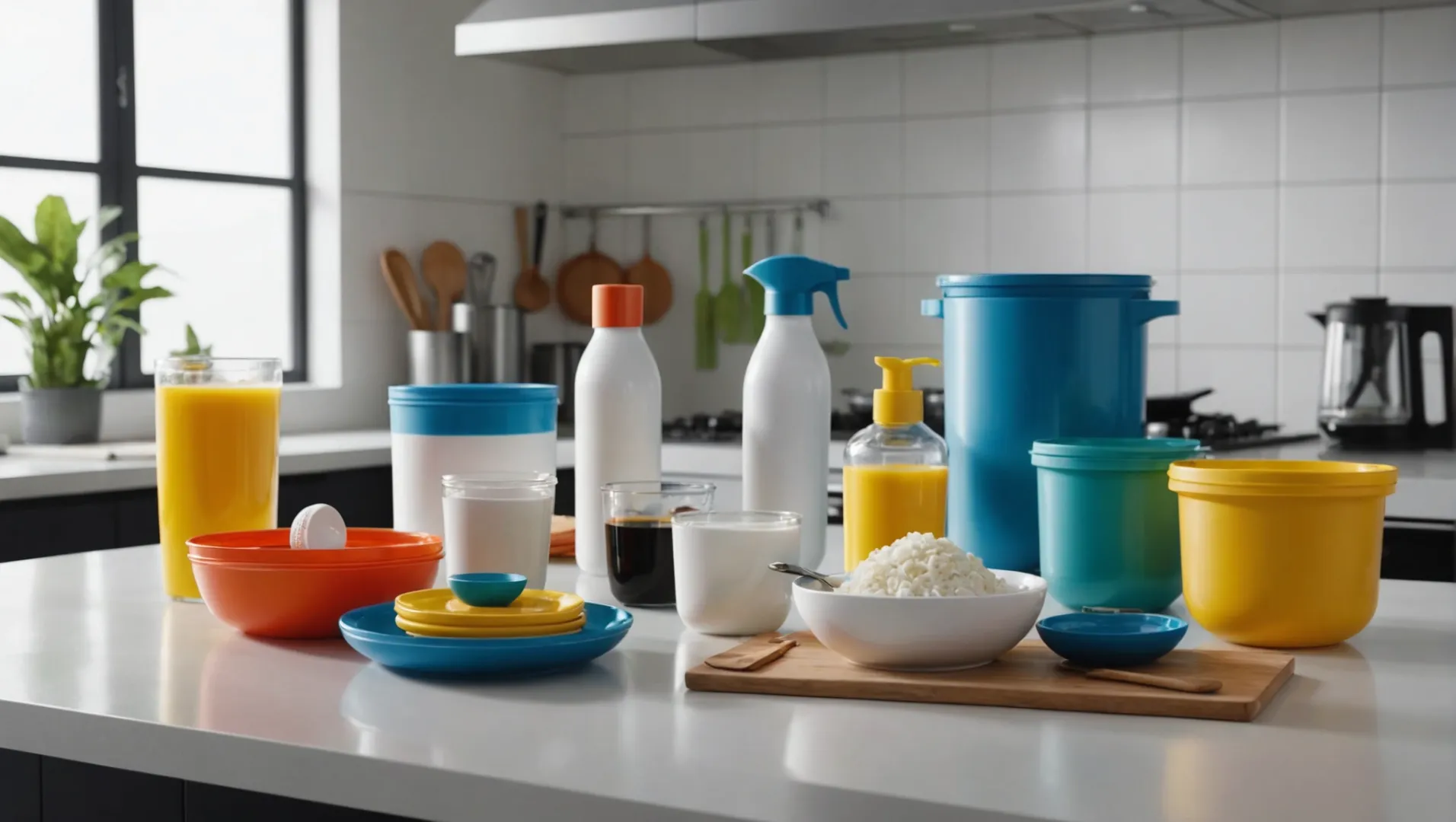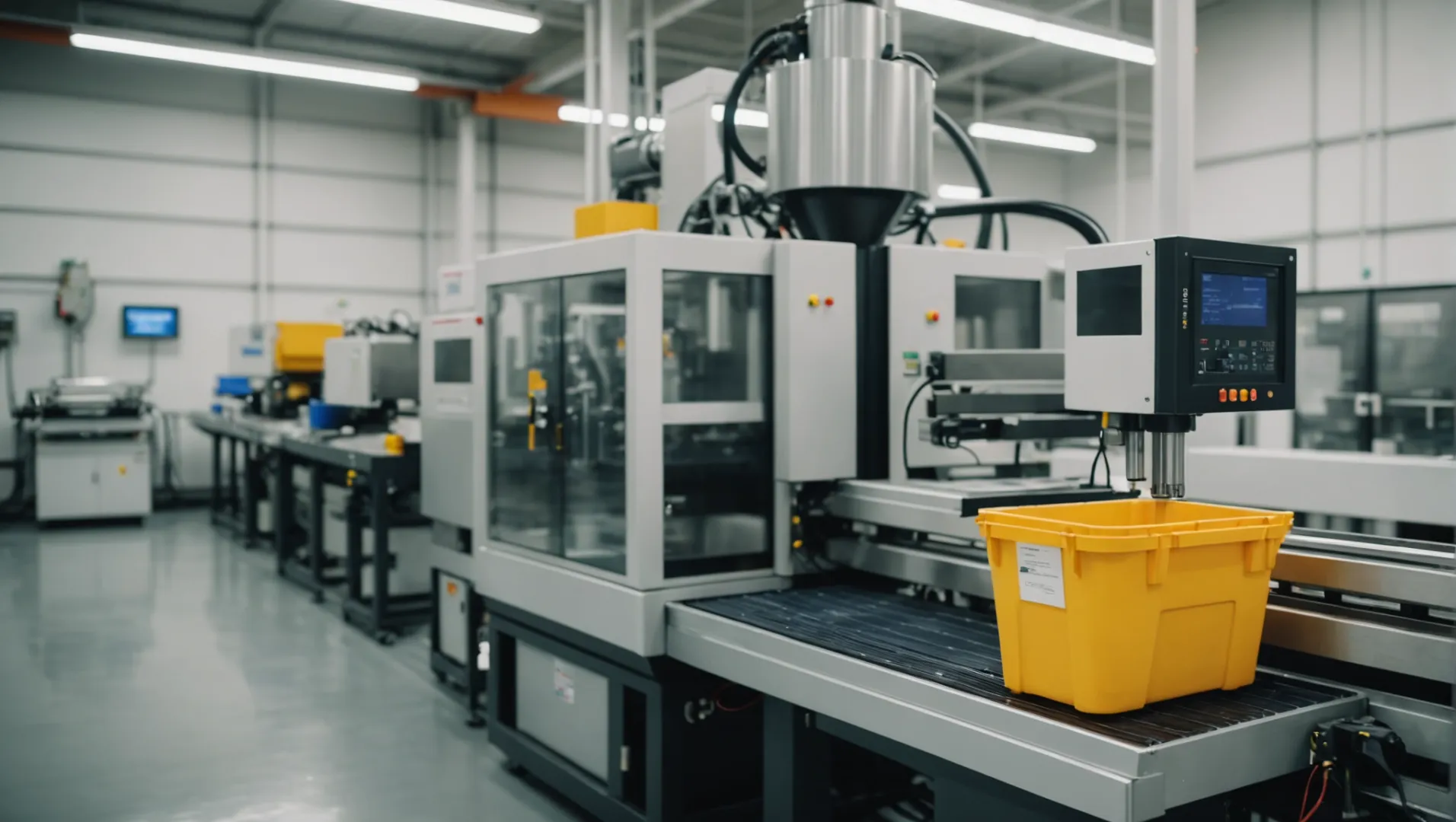
In the rapidly evolving world of household goods, injection molding is at the forefront of innovation. It’s fascinating to witness how these products transform not just our spaces but also our lives!
The latest market trends for injection molded household products include a growing demand driven by improved living standards, a focus on sustainable development through material innovation, and an increasing preference for smart and multifunctional designs.
While these trends provide a snapshot of current market dynamics, a deeper dive reveals how businesses can leverage these insights to enhance their offerings. Understanding these trends is crucial for staying competitive in the market and meeting consumer expectations effectively.
Biodegradable plastics reduce waste in injection molding.True
Biodegradable plastics decompose naturally, minimizing ecological impact.
How is Sustainability Influencing Material Innovation in Injection Molding?
Sustainability is reshaping material choices in injection molding, fostering eco-friendly innovations.
Sustainability is driving material innovation in injection molding by promoting the use of biodegradable and recycled plastics. This shift addresses environmental concerns and aligns with consumer preferences for eco-friendly products, significantly impacting the production of household goods.

The Push Towards Biodegradable Plastics
In response to growing environmental awareness, the injection molding industry is increasingly incorporating biodegradable plastics. These materials decompose naturally, reducing waste and minimizing ecological footprints. For instance, products like trash cans and flower pots made from biodegradable plastics not only serve household needs but also lessen environmental impact.
A significant aspect of this trend is the development of new polymers that maintain the functional integrity required for household goods while offering biodegradability. Companies are investing in research to improve the strength and durability of these materials to ensure they meet consumer demands for both sustainability and usability.
Embracing Recycled Plastics
The drive to use recycled materials has also gained momentum. Recycled plastics offer a sustainable alternative by repurposing waste materials, thereby reducing reliance on virgin resources. This aligns with consumer demand for environmentally friendly products and supports a circular economy.
Injection molding companies are utilizing advanced sorting and processing technologies to enhance the quality of recycled plastics. This ensures that products such as storage boxes and garden furniture meet stringent quality standards while being eco-friendly.
Environmentalization of Production Processes
Beyond material innovation, the production process itself is undergoing transformation. Companies are adopting energy-efficient machinery and implementing processes aimed at reducing emissions and waste. For example, the use of closed-loop systems in injection molding reduces material loss and optimizes resource utilization.
By integrating renewable energy sources, such as solar or wind power, into manufacturing facilities, companies can further decrease their carbon footprint. This not only enhances sustainability but also improves operational efficiency and cost-effectiveness.
Impact on Market Trends
The emphasis on sustainability is influencing market trends significantly. Consumers are more informed and increasingly prefer products that align with their values regarding environmental stewardship. As a result, household goods manufacturers are prioritizing eco-friendly materials in their product lines.
This shift is also reflected in regulatory landscapes, where governments worldwide are instituting stricter guidelines on plastic usage and waste management. Companies that proactively adapt to these changes can gain a competitive edge by catering to both market demands and regulatory requirements.
Challenges and Opportunities
While the move towards sustainable materials presents opportunities for innovation, it also poses challenges. The cost of developing new materials and retrofitting existing production lines can be substantial. However, the long-term benefits, including enhanced brand reputation and compliance with evolving regulations, often outweigh these initial investments.
To thrive in this evolving landscape, companies should focus on continuous research and development. Collaborations with material scientists and environmental experts can accelerate the development of viable sustainable materials for injection molding applications.
In conclusion, sustainability is not just a trend but a transformative force in material innovation for injection molding. By embracing eco-friendly practices, companies can not only meet consumer expectations but also contribute positively to global environmental goals. Explore more about biodegradable plastics1 and discover innovations in recycled materials2.
Biodegradable plastics reduce ecological footprints.True
Biodegradable plastics decompose naturally, minimizing waste and pollution.
Recycled plastics are not used in injection molding.False
Recycled plastics are increasingly used, supporting sustainability and circular economy.
What Role Does Smart Technology Play in Household Product Design?
Smart technology is reshaping household product design by integrating intelligence and functionality.
Smart technology in household product design enhances convenience, efficiency, and user experience by integrating features like remote control, intelligent sensing, and multifunctionality.

Integration of Smart Features in Household Products
The incorporation of smart technology in household products has transformed the way we interact with everyday items. This trend is driven by the desire for increased convenience and efficiency in managing household tasks. For instance, smart trash cans can detect when they’re full and automatically open or close, eliminating the need for manual handling. Similarly, smart storage solutions can be controlled via a mobile app, allowing users to organize their spaces more effectively.
Incorporating smart features into products involves embedding sensors and connectivity capabilities, which enable products to communicate with users and other devices. This not only enhances the user experience but also allows for better resource management and energy efficiency.
Multifunctionality Through Smart Technology
Consumers increasingly seek products that offer more than just their primary function. Smart technology enables the integration of multiple functionalities into a single product. For example, a plastic coffee table might include charging ports or built-in speakers, making it a hub for both entertainment and utility.
The combination of smart features with multifunctional designs also addresses space constraints often found in modern homes. By offering multiple uses within a single item, these products help maximize available space and provide greater value to consumers.
The Impact of Smart Technology on Design Aesthetics
As technology becomes an integral part of product design, aesthetics also evolve to accommodate new functionalities. Designers must balance form and function to ensure that smart products remain visually appealing while housing complex technologies. This may involve using sleek materials or integrating displays seamlessly into the product surface.
For instance, plastic lamps with adjustable brightness might feature touch-sensitive controls that blend into the lamp’s design, maintaining a minimalist look while providing advanced functionality.
Challenges and Opportunities in Smart Product Design
While the integration of smart technology presents exciting opportunities, it also poses certain challenges. Designers must consider the technical feasibility of incorporating smart components without compromising the product’s structural integrity or user-friendliness. Additionally, ensuring compatibility with existing smart home systems is crucial to providing a seamless user experience.
Despite these challenges, the demand for smart products is expected to grow, fueled by consumer interest in automation and connectivity. This presents an opportunity for businesses to innovate and create products that meet evolving consumer needs.
By understanding how smart technology can enhance product design, companies can develop offerings that not only meet functional requirements but also delight users with their intuitive and responsive features. For more insights on how smart home products are developed, check out this comprehensive guide3.
Smart trash cans can self-open when full.True
Smart trash cans use sensors to detect fullness and open automatically.
Smart technology reduces product design aesthetics.False
Smart tech often enhances aesthetics by integrating seamlessly into designs.
Why is Personalized Customization Becoming More Important?
In an age where individuality is celebrated, personalized customization has become a key driver in consumer purchasing decisions.
Personalized customization is gaining importance due to increasing consumer demand for unique products that reflect individual tastes, coupled with advancements in technology that enable efficient, tailored production processes.

The Rise of Consumer Demand for Unique Products
As consumers increasingly seek products that reflect their personal tastes and preferences, the demand for personalized customization is skyrocketing. This shift is particularly evident in the realm of household goods, where individuals want items that not only serve functional purposes but also resonate with their personal aesthetic.
Household product manufacturers have observed a surge in requests for customized designs4, such as bespoke plastic lamps or decorative ornaments tailored to specific consumer desires. The days of one-size-fits-all are fading, as more people desire products that make a statement about their identity.
Technological Advancements in Customization
The rise of personalized customization would not be possible without significant technological advancements. Modern technology, such as 3D printing and advanced injection molding techniques, allows manufacturers to produce customized goods efficiently and at scale. These technologies enable the production of unique items without the exorbitant costs previously associated with custom manufacturing.
For instance, using CAD (Computer-Aided Design) software, designers can quickly modify product designs to meet specific customer requirements. This flexibility not only caters to unique consumer needs but also enhances the production efficiency5 of manufacturers.
Business Strategy: Flexibility and Responsiveness
Businesses that wish to thrive in today’s market must adopt a flexible production model and establish a robust customized service system. By investing in advanced technology and equipment, companies can achieve rapid customized production, thereby improving both production efficiency and product quality.
Moreover, organizations are now focusing on creating systems that allow consumers to participate in the design process. This collaborative approach not only fosters customer loyalty but also ensures that the end product precisely meets consumer expectations. A flexible production system6 enables manufacturers to swiftly respond to changing consumer trends and demands.
The Economic Implications of Personalized Customization
From an economic standpoint, personalized customization can lead to increased sales and customer retention. When consumers are offered products that align closely with their preferences, they are more likely to make a purchase and remain loyal to the brand. This loyalty translates into repeat business and positive word-of-mouth marketing.
Additionally, by embracing personalized customization, businesses can differentiate themselves in a competitive market. Offering unique, tailored products provides a competitive edge and helps in capturing a niche audience that values individuality.
Challenges and Opportunities
Despite its numerous benefits, personalized customization does come with challenges. The need for flexible manufacturing processes requires significant investment in technology and training. Moreover, managing a diverse range of custom orders can complicate logistics and inventory management.
However, these challenges also present opportunities for innovation. Companies that successfully navigate these hurdles can position themselves as leaders in the industry by offering unparalleled customization options and superior customer service.
Consumers prefer unique products over mass-produced ones.True
Individual tastes drive demand for customized items, reflecting personal style.
3D printing hinders efficient production of customized goods.False
3D printing enhances efficiency by enabling cost-effective, tailored manufacturing.
How Are Online Sales Channels Shaping Market Dynamics?
Online sales channels are transforming how markets operate, influencing both consumer behavior and business strategies.
Online sales channels are reshaping market dynamics by providing businesses with broader reach, facilitating personalized marketing strategies, and enabling seamless integration with offline operations to enhance consumer experiences.

Expanding Reach and Market Access
The digital revolution has opened up unprecedented opportunities for businesses to expand their reach beyond geographical boundaries. E-commerce platforms, such as Amazon and Alibaba, have empowered companies to tap into global markets with ease. This expansion is not only increasing sales volumes but also enabling small and medium-sized enterprises (SMEs) to compete on a larger stage, fostering innovation and diversity in product offerings.
Facilitating Personalized Marketing Strategies
With the wealth of data available online, businesses can now tailor their marketing strategies to individual consumer preferences. Through advanced data analytics and AI-driven insights, companies can predict consumer behavior, personalize recommendations, and craft targeted advertising campaigns. This personalization fosters deeper customer engagement and loyalty, as consumers feel understood and valued by brands.
Seamless Online and Offline Integration
The integration of online sales channels with traditional brick-and-mortar stores has become a pivotal strategy for businesses aiming to enhance the customer journey. Companies are increasingly adopting omnichannel approaches, where online platforms serve as an extension of physical stores. For instance, customers can browse products online, check availability at nearby locations, and even choose to pick up purchases in-store. This seamless experience not only caters to consumer convenience but also encourages foot traffic to physical outlets, thereby driving overall sales.
Impacts on Household Goods Injection Molding Market
In the context of household goods injection molding, these online sales channels play a significant role. The development of e-commerce platforms7 provides a more convenient channel for sales. Consumers can easily purchase various household products online, including plastic storage boxes and smart home items. Furthermore, the integration of online and offline channels ensures that consumers enjoy a cohesive shopping experience that blends the benefits of digital convenience with tangible product interactions.
Future Prospects and Considerations
Looking forward, the continuous evolution of online sales channels promises further transformation in market dynamics. As technology advances, virtual reality (VR) and augmented reality (AR) may redefine how consumers interact with products before purchase. Businesses must stay agile, continuously adapting their strategies to leverage these innovations effectively while maintaining a strong brand presence across all platforms. By doing so, they can ensure sustainable growth and a competitive edge in the ever-changing market landscape.
E-commerce enables SMEs to compete globally.True
Online platforms allow small businesses to reach international markets.
Online sales channels reduce consumer engagement.False
They increase engagement by personalizing marketing and experiences.
Conclusion
In conclusion, staying ahead in this evolving market requires embracing sustainable materials, integrating smart technology, and prioritizing personalized customization. Let’s innovate together to meet the changing demands of consumers!
-
Learn about how biodegradable plastics benefit the environment.: Biodegradable plastic is plastic which degrades under biological (mainly microbial) action. Some biodegradable plastics are compostable (but not … ↩
-
Discover recent advancements in recycling technologies for plastics.: Scientists are looking for new ways to recycle plastic in an endless loop, so it never becomes waste. Now, revolutionary technology is advancing the movement. ↩
-
Discover how smart home products integrate technology seamlessly.: Smart, connected products can be controlled through remote commands or algorithms that are built into the device or reside in the product cloud. Algorithms are … ↩
-
Explore how custom designs enhance product uniqueness and consumer satisfaction.: Here are the top 5 benefits of custom home furniture: · Quality Furniture Solutions · Design Expression · Save Time & Money · Furniture Flexibility … ↩
-
Learn how technology boosts efficiency in custom product manufacturing.: Six trends that are transforming the custom manufacturing industry: The Internet of Things, Advanced Analytics, Robotics, 3D Printing, Augmented Reality, and … ↩
-
Discover how flexibility aids businesses in meeting personalized demands.: Although the initial investment in FMS can be high, the long-term cost savings are significant. Reduced labor costs, lower error rates, and … ↩
-
Explore how e-commerce enhances accessibility for household products.: Empirical findings revealed a positive relationship between e-commerce marketing and real household consumption in the U.S. For example, a one-unit improvement … ↩






